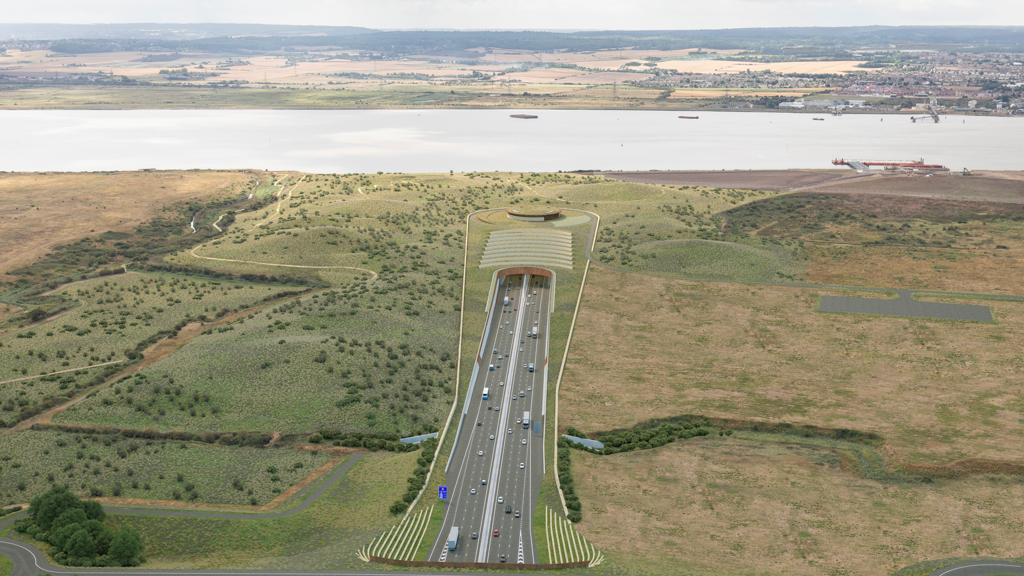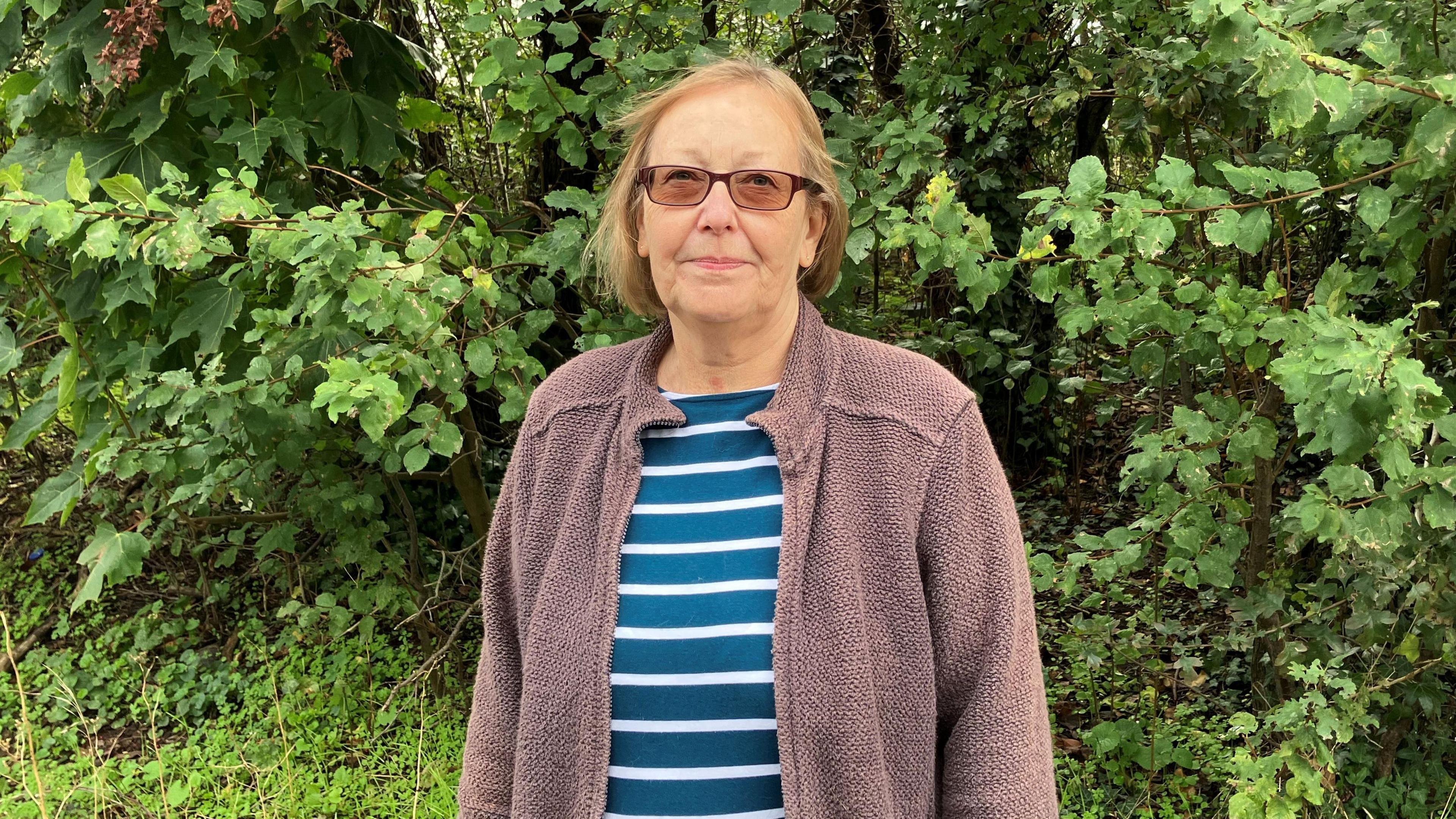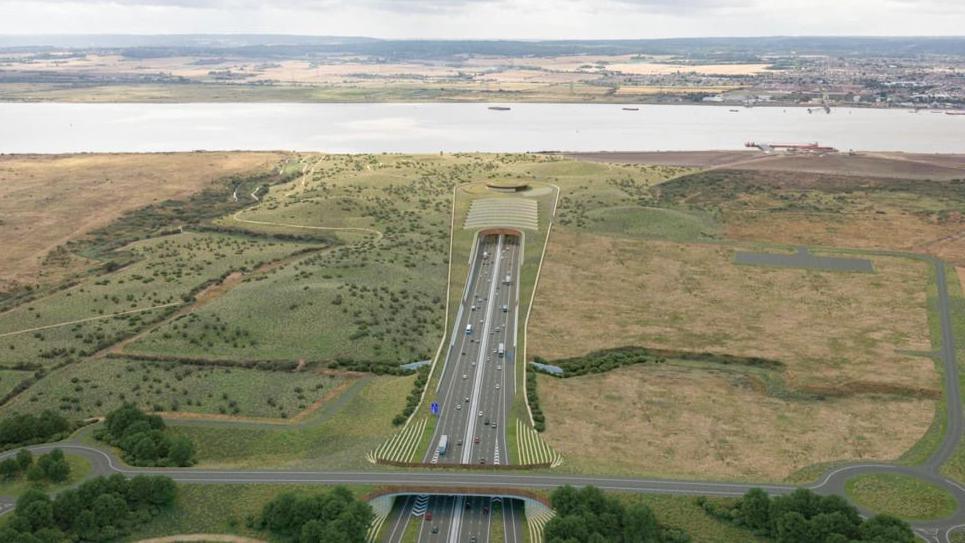Lower Thames Crossing to use new environmental scheme

The tunnels will be located to the east of Gravesend in Kent, and to the west of East Tilbury in Essex
- Published
The Lower Thames Crossing is the first major building project where a new scheme to cut environmental red tape will be put to the test, ministers have announced.
The project, which will link Tilbury in Essex and Gravesend in Kent with two tunnels, is the first infrastructure scheme where a lead environmental regulator will be appointed.
Under the new approach, Natural England will oversee all environmental safeguarding work, while other watchdogs with an interest - the Environment Agency and Marine Management Organisation - will give advice.
The system is aimed at cutting the time it takes to meet planning permission requirements and approvals for environmental plans.
It could also reduce costs, according to the Department of Environment, Food and Rural Affairs (Defra).
Issues blocking the tunnel's construction can also be escalated to Defra's new infrastructure board to resolve them.
Appointing a lead environmental regulator to major projects was among the headline recommendations of the Corry Review, which has looked at how green rules could be reformed to stop new schemes from being blocked or bogged down for years.
Ministers are expected to report back on how they plan to implement some of the other recommendations of the review on Tuesday.

The project will link Tilbury in Essex and Gravesend in Kent with two tunnels
Environment Secretary Steve Reed said: "Under the government's Plan for Change, a new approach will see a lead environmental regulator appointed to smooth the system and keep projects firmly on track.
"This means faster transport, energy and housing developments nationwide that will be better for the economy and properly protect the environment."
Sienna Somers, nature campaigner at Friends of the Earth, said: "Real planning reforms will only succeed if nature is embedded at the heart of the process – not treated as a problem to overcome or a 'nice to have'.
"When wildlife and habitats are reduced to box-ticking exercises, it leads to avoidable conflict, delays and higher costs."
She added: "Planning must be nature-led, with the ambition to restore and connect habitats shaping where and how we build.
"Nature isn't the barrier but the foundation for healthier, more resilient communities."
Additional reporting from PA Media.
Follow BBC Kent on Facebook, external, on X, external, and on Instagram, external. Send your story ideas to southeasttoday@bbc.co.uk, external or WhatsApp us on 08081 002250.
Related topics
- Published25 March

- Published14 October 2024

- Published9 January
